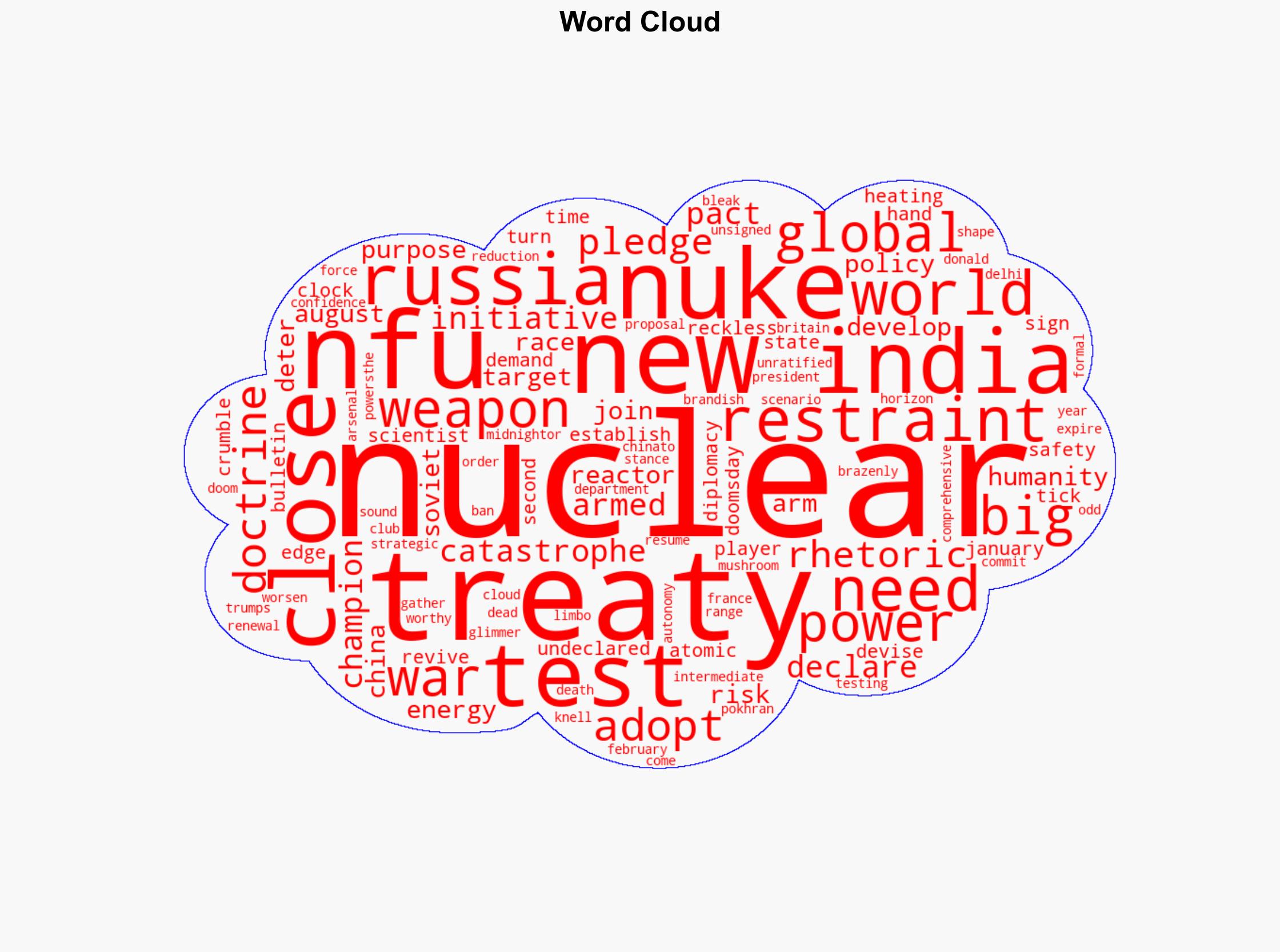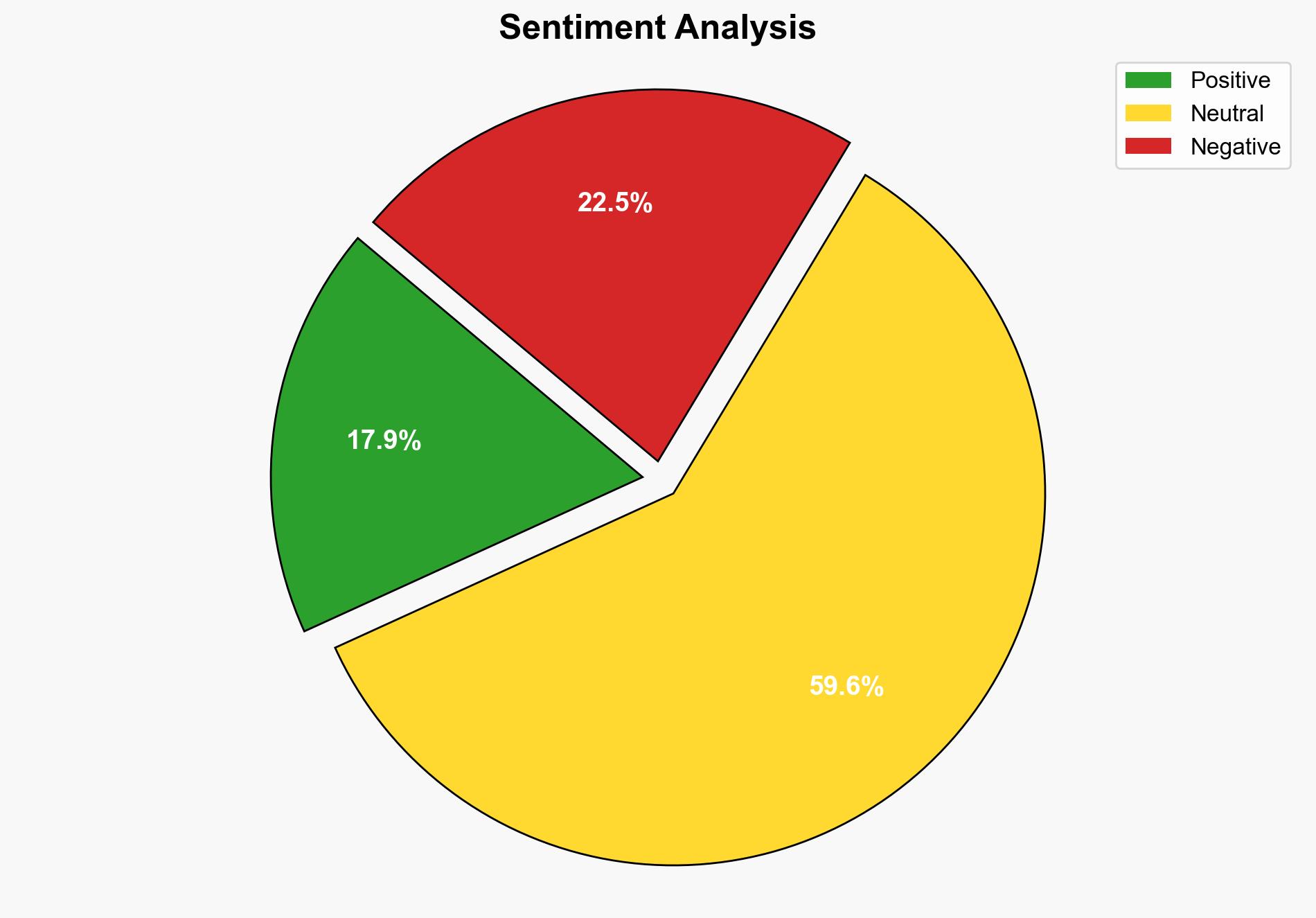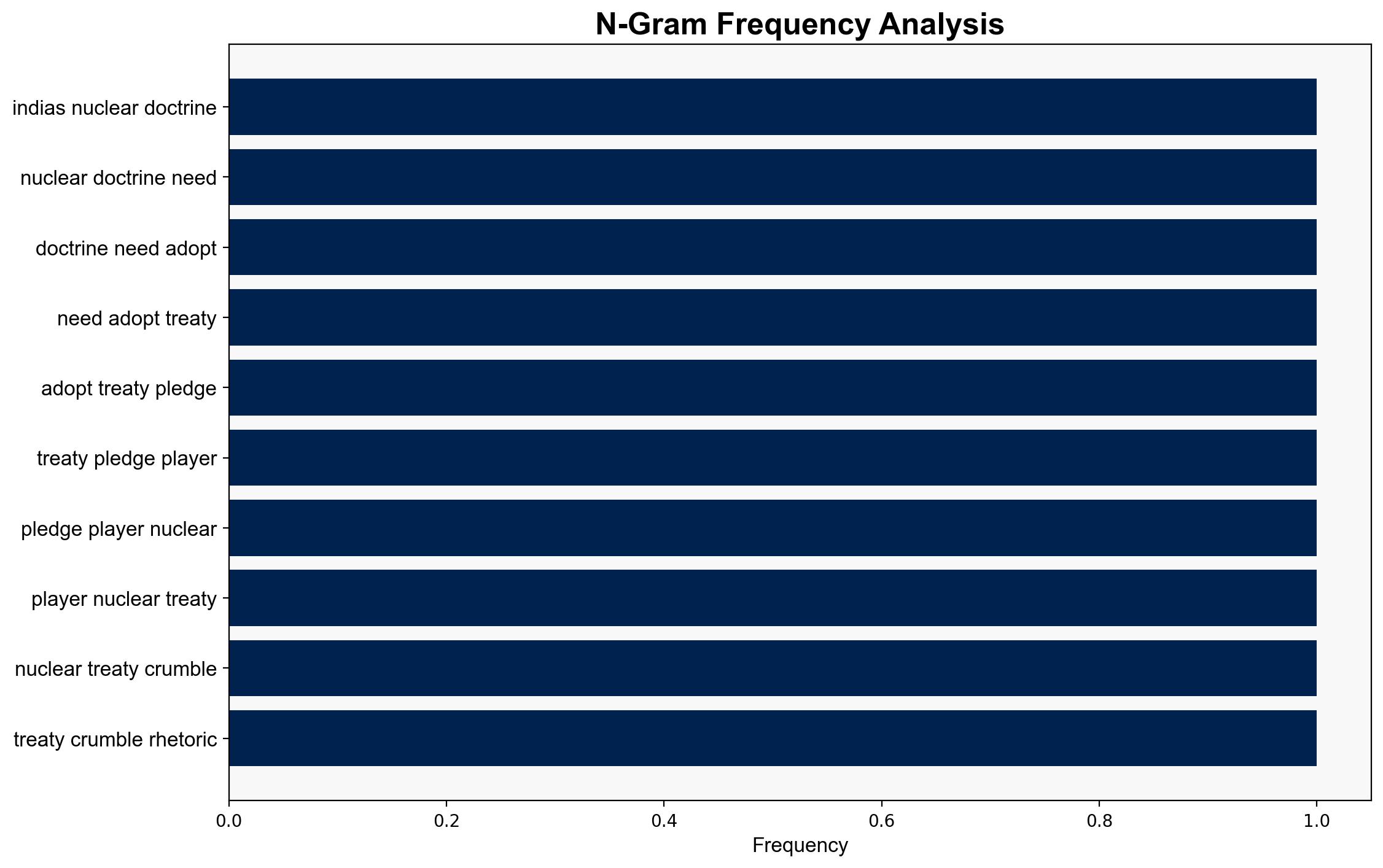No First Use Indias nuclear doctrine needs to be adopted as a treaty pledge by all players – Livemint
Published on: 2025-11-04
Intelligence Report: No First Use Indias nuclear doctrine needs to be adopted as a treaty pledge by all players – Livemint
1. BLUF (Bottom Line Up Front)
The strategic judgment is that the adoption of India’s No First Use (NFU) nuclear doctrine as a global treaty could potentially stabilize nuclear tensions, though significant geopolitical resistance is expected. The hypothesis that the NFU doctrine can be universally adopted is less supported due to existing geopolitical dynamics and historical precedence. Confidence level: Moderate. Recommended action: Initiate diplomatic dialogues focusing on incremental nuclear restraint agreements rather than a comprehensive NFU treaty.
2. Competing Hypotheses
1. **Hypothesis A**: The global adoption of India’s NFU doctrine will lead to enhanced nuclear stability and reduce the risk of nuclear conflict.
2. **Hypothesis B**: The proposal for a global NFU treaty will face significant resistance from nuclear-armed states, making its adoption unlikely and potentially exacerbating existing tensions.
Using the Analysis of Competing Hypotheses (ACH) 2.0, Hypothesis B is better supported. Historical reluctance from major nuclear powers to adopt NFU policies, coupled with current geopolitical tensions, suggests resistance to such a treaty.
3. Key Assumptions and Red Flags
– **Assumptions**: It is assumed that all nuclear-armed states have equal interest in reducing nuclear tensions, which may not be the case given strategic interests.
– **Red Flags**: The lack of commitment from key nuclear states like the United States and Russia to previous arms control agreements highlights potential resistance.
– **Blind Spots**: The impact of emerging technologies and cyber capabilities on nuclear strategies is not addressed.
4. Implications and Strategic Risks
– **Geopolitical**: Resistance to NFU adoption could lead to increased polarization among nuclear states.
– **Economic**: Potential arms race escalation could divert resources from economic development.
– **Cyber**: Increased reliance on digital systems for nuclear command and control could introduce vulnerabilities.
– **Psychological**: Public perception of nuclear threat may increase, affecting global stability.
5. Recommendations and Outlook
- Engage in multilateral discussions to explore phased nuclear restraint measures rather than a comprehensive NFU treaty.
- Enhance verification mechanisms to build trust among nuclear states.
- Scenario Projections:
- Best: Incremental agreements lead to gradual reduction in nuclear arsenals.
- Worst: Breakdown in negotiations leads to renewed arms race.
- Most Likely: Partial agreements with limited scope are reached, maintaining status quo.
6. Key Individuals and Entities
– Narendra Modi
– Vladimir Putin
– Xi Jinping
– Joe Biden
– Boris Johnson
7. Thematic Tags
national security threats, nuclear policy, geopolitical stability, arms control




